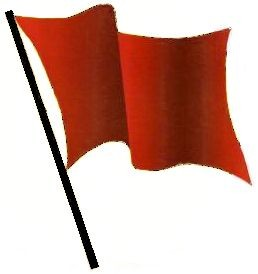Avoid Using E-mail Flags—And Get better Inbox Control!
A lot of us set flags on our e-mail thinking it will show us which e-mails need further action (or in Gmail you use stars). However, if you have 20, 30, or hundreds of flagged e-mails in your inbox, doing that actually makes you less efficient!

Why This Is a Problem
Why less efficient? Because over time you have to reread those flagged (or starred) mail items too many times trying to decide if each one has become critical enough yet to act on. That rehashing leads to wasted time and angst, and it leads to dropping important things when you don’t scan everything. Some people have thousands of flagged items in their Inbox and wonder why so many things get missed!
Don't Use the Inbox to Manage Tasks!
The underlying problem (whether using flags or not) is you’re trying to use your inbox as a task management system, and the inbox does not have the right tools to manage tasks. There’s no way to prioritize or date actions stored in the Inbox. And the titles of the e-mail rarely match the action request inside, so you really do have to reread the e-mail to figure out later why you’re saving them; so you save them all “just in case.” Trying to manage tasks in the Inbox is why your Inbox is so out of control!
The Solution
The solution is simple (I elaborate it in the 1MTD and MYN systems): Use a simple and quick method to convert the e-mail into a well-managed Outlook (or other system) task, and then work your highest priority tasks first. This gets your inbox under control (once converted to a task, you move the e-mail out of the Inbox), and it refocuses your work time on to your most important items. People who do this report a huge reduction in stress and many many hours saved per week.
The One Remaining Purpose of an E-mail Flag
Once you start doing that, then I advise using the flag for one and only one thing: to mark deferred replies you intend to get to in a day or so. Use it for nothing else. Then remove the flag after you write the reply, and move the mail out of the Inbox. If you want to use flags for other reasons (like for mail you may want to read more later), use Categories (Outlook) or Labels (Gmail) as a way to mark such e-mails instead.
If you do all this, you’ll only have a few flagged items at any time, and your Inbox will no longer be a stockpile of unreconciled actions bogging down your attitude. Your stomach won’t tighten when you look at your Inbox!
How to Get Started
If you are just getting started on this, including how to manage tasks, check out my free One Minute To-Do list book. And for the ultimate level of control using Outlook, see my book Total Workday Control Using Microsoft Outlook (just out in its new 4th edition).
Other News/Recent Articles
Here are some other recent articles Michael has written that you may find useful: